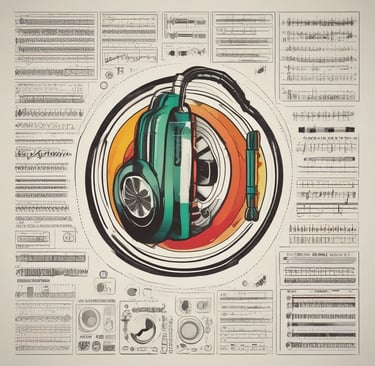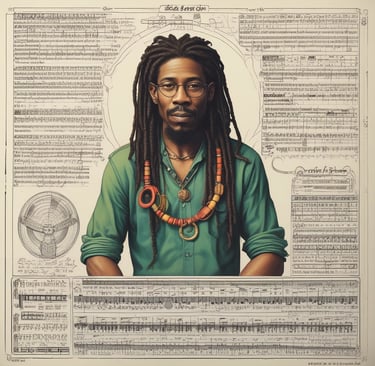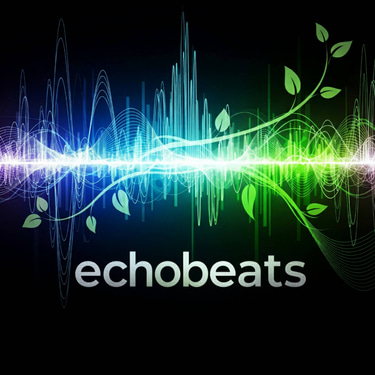The Anatomy of the Reggae One Drop
Albatt Universe
11/12/20258 min read



Introduction to the One Drop Rhythm
The one drop rhythm is a foundational element of reggae music, characterized by its distinctive emphasis on the first beat of each measure. Unlike many other musical styles that highlight the backbeat, particularly the second and fourth beats, the one drop presents a more understated and captivating approach. This rhythm serves as a hallmark of reggae, offering a unique auditory experience that sets it apart from genres such as rock or pop, where the emphasis often falls on those off-beats.
In the one drop rhythm, the bass and drums collaborate harmoniously to create a pulsating beat that allows other instruments, including guitar and keyboards, to fill in around it. This provides a spacious quality to the music, giving it an organic feel that encapsulates the essence of reggae. The simplicity of the one drop allows for a deeper emotional connection, as it conveys messages of peace, love, and resistance without overwhelming the listener. Reggae artists build upon this rhythmic foundation to convey their narratives, creating songs that resonate with audiences worldwide.
The significance of the one drop rhythm extends beyond its technical construction; it embodies the rich cultural heritage and social commentary intrinsic to reggae music. Throughout its evolution, this rhythmic style has influenced not only reggae but also various other genres, including hip-hop and R&B. The one drop serves as a bridge connecting diverse musical traditions while remaining firmly rooted in its Jamaican origins. Understanding the one drop rhythm is crucial for appreciating the broader sonic landscape of reggae and recognizing the interplay of rhythm and melody that defines this globally revered genre.
Historical Context of Reggae and the One Drop
Reggae music, which originated in Jamaica at the end of the 1960s, reflects a rich tapestry of social, cultural, and musical influences. The evolution of reggae brought forth various stylistic developments, one of the most significant being the one drop rhythm. This particular beat became emblematic not only of the genre but also of the broader social issues entwined with Jamaica’s history. The one drop rhythm emerged during a period marked by political strife and social change, ultimately serving as a vessel for the expression of the Rastafarian movement.
The roots of reggae can be traced back to earlier musical genres such as ska and rocksteady, which were prevalent in Jamaica during the 1960s. As Jamaican society faced challenges related to colonial legacy, economic struggles, and social inequality, musicians began to adopt a rhythmic pattern that emphasized a more authentic and stripped-back sound, allowing the vocals to shine. This shift led to the establishment of the one drop beat, characterized by its steady bass drum hit on the third beat of the measure, which brought a new sense of groove and depth to the music.
Pioneering artists such as Bob Marley, Peter Tosh, and Bunny Wailer played crucial roles in popularizing reggae music internationally. Their works often carried themes of resistance, empowerment, and cultural pride, resonating with collective struggles and aspirations. The one drop rhythm became a distinctive feature of reggae songs during this era, blending the cultural nuances derived from African rhythms and Caribbean folk traditions. The powerful messaging delivered through the one drop beat contributed to the genre’s association with social justice, deeply rooting reggae in Jamaica's cultural identity while simultaneously influencing political discourse on a global scale.
Understanding the Beat: Breaking Down the One Drop
The one drop rhythm, a hallmark of reggae music, is characterized by its distinctive backbeat placement. Unlike traditional drumming patterns where the bass drum often anchors beats one and three or two and four, in the one drop, the emphasis is shifted to the third beat. This unique approach not only alters the overall sound profile of reggae but also enhances its groove, making it immediately recognizable to listeners.
At its core, the one drop consists of a bass drum hit on the third beat, while the snare drum is often silent on beats one and two. This creates an open space that allows the melodic elements of reggae to shine. The absence of a snare hit on the first beat distinguishes the one drop from other styles, cultivating a laid-back feel that has become the genre's signature. Musicians often complement this with syncopated rhythms played on the guitar and keyboard, enhancing the groove and providing a rich textural layer to the music.
The bass line plays a critical role in the one drop rhythm. Unlike other genres that may emphasize speed and complexity, reggae bass lines in the one drop tend to be melodic yet straightforward. The bassist often outlines the chord changes while creating a syncopated rhythm that interacts seamlessly with the drum pattern. This interplay between the bass and drums is essential, as it solidifies the foundation of the one drop, inviting listeners to engage with the rhythm at a deeper level.
Additionally, instrumental components such as the guitar, often characterized by offbeat strumming, add to the overall texture of the one drop. This technique, known as "chopping," enhances the percussive quality of the guitars and helps create a harmonious union with the drums and bass. In essence, the intricate relationship between these elements forms the backbone of the one drop, making it a vital aspect of reggae music.
The Role of Instruments in the One Drop
The One Drop rhythm, a pivotal element within reggae music, is characterized by its unique instrumentation that collectively crafts its distinctive sound. At the heart of this rhythm lies the drum kit, where the bass drum typically plays on beats three and four, rather than two and four like in many other genres. This unconventional placement creates a laid-back, syncopated feel that is emblematic of the One Drop style. The snare and hi-hat often mirror this groove by providing accents that complement the bass drum, contributing to the overall rhythmic foundation.
Equally crucial to the One Drop is the bass guitar, which serves as the backbone of the musical composition. Unlike in many other musical styles where bass lines often follow or embellish the harmony, in reggae, the bass is more melodic and rhythmic. The bass lines in One Drop rhythms tend to emphasize the off-beat, providing depth and resonance. This interplay between the bass and the drums builds a solid framework that supports the harmonic elements of the song.
Furthermore, the rhythm guitar plays a vital role in defining the One Drop's sound. Generally, the rhythm guitar strums off-beat chords, creating a counterpoint to the bass line and adding textural richness. These guitar chops are often syncopated, enhancing the laid-back groove that reggae is renowned for. In the context of the One Drop, the combination of these instrumental approaches establishes a rhythmic dialogue that engages listeners.
Finally, keyboards are employed to enrich the harmonic structure. They typically provide background chords or melodic lines that add layers to the music. This combination of instruments—drum kit, bass guitar, rhythm guitar, and keyboards—works cohesively to create the One Drop rhythm, showcasing the distinctive qualities that make reggae a unique and influential musical genre.
The Emotional and Cultural Significance of the One Drop
The One Drop rhythm holds a profound emotional and cultural significance in reggae music, serving as a beacon of relaxation and a declaration of resistance. At its core, the One Drop is characterized by its unique emphasis on the third beat of the measure, creating a laid-back yet impactful sound that resonates deeply with listeners. This rhythmic pattern not only cultivates a sense of tranquility but also fosters a spirit of unity among its audience, reflecting the very essence of reggae's roots in Jamaican culture. As a style, the One Drop rhythm encapsulates key themes such as social justice, identity, and communal strength, which are pillars of the reggae movement.
Many musicians and fans alike have shared personal anecdotes that illustrate the deeply felt impact of the One Drop. For instance, reggae artist Protoje recounts how performing One Drop songs at festivals creates an atmosphere where people from diverse backgrounds come together, united by a shared love for the music. The rhythm evokes feelings of camaraderie, igniting a collective sense of pride and empowerment, often becoming anthems for movements seeking change. Similarly, fans express how listening to One Drop tracks evokes nostalgia for simpler times, providing a mental escape from the pressures of everyday life.
The cultural significance of the One Drop extends beyond music, serving as a form of resistance against oppressive systems and societal challenges faced by many in Jamaica and the African diaspora. The lyrics and rhythms communicate messages that resonate globally, with the One Drop becoming a symbol of resilience and hope. This powerful connection fosters a community engagement that transcends geographical boundaries, inviting listeners to not just enjoy the music, but embody its messages of peace, love, and unity. Overall, the One Drop is not merely a rhythm; it is a cultural phenomenon that encapsulates the spirit of reggae and its ongoing impact on individuals and communities worldwide.
Evolution and Variations of the One Drop in Modern Music
The one drop rhythm, a hallmark of reggae music, has undergone significant evolution since its inception in the late 1960s. Originally characterized by a focus on the third beat, this rhythm creates a unique groove that has resonated across multiple music genres. In recent years, the one drop has found its way into various contemporary adaptations, showcasing its versatility and widespread influence.
In modern reggae, artists have preserved the fundamental elements of the one drop while integrating modern production techniques and instrumentation. Prominent reggae musicians, such as Protoje and Chronixx, blend traditional reggae elements with contemporary jazz, hip-hop, and R&B influences. This fusion not only revitalizes the classic one drop rhythm but also attracts a younger audience, contextualizing reggae within the broader modern music landscape.
Moreover, crossover collaborations between reggae artists and mainstream pop musicians have further accentuated the one drop's adaptability. The collaboration between Major Lazer and artists like Nicki Minaj exemplifies how the one drop can fit seamlessly into the pop genre, merging energetic dance rhythms with catchy hooks. This blending often results in tracks that are not just appealing but also accessible to a wider audience, allowing for the rhythm's significant presence in charts worldwide.
The influence of the one drop rhythm extends beyond reggae and pop, finding its way into genres such as hip-hop and alternative music. Artists like Anderson .Paak incorporate the one drop into their sound, enriching their compositions with a sense of laid-back groove. Similarly, bands in the indie and fusion scenes experiment with the one drop, creating innovative sounds that challenge genre boundaries.
This evolving interplay demonstrates that the one drop rhythm remains a vital component of modern music, continually reshaping itself in response to contemporary trends and influences, while still paying homage to its reggae roots.
Conclusion: The Enduring Legacy of the One Drop Rhythm
The one drop rhythm stands as a fundamental element in the reggae genre, intertwining cultural significance with musical innovation. Originating in Jamaica during the late 1960s, this unique rhythm encapsulates a deep sense of identity and has evolved over several decades, influencing countless artists and genres worldwide. One of the hallmark features of the one drop is its distinctive emphasis on the third beat within a 4/4 time signature, which not only drives the music forward but also creates a sense of groove and laid-back vibe that is quintessential to reggae.
Throughout this discussion, we have explored how the one drop rhythm serves as a backbone for numerous reggae subgenres, from roots to dancehall. Its influence extends beyond the realm of music, as it embodies a message of resilience, peace, and the promotion of social consciousness. Major reggae icons such as Bob Marley and Peter Tosh have utilized this rhythm to bring attention to social and political issues, thus reinforcing the one drop's role not only as a musical technique but as a cultural statement that resonates with listeners of all backgrounds.
Additionally, the ongoing adaptation of the one drop rhythm by contemporary musicians demonstrates its versatility and enduring appeal. Artists continue to integrate the one drop into various styles, allowing it to resonate across diverse musical landscapes, bridging generational gaps. The rhythm serves as both a reminder of reggae’s rich heritage and an invitation for new artists to innovate within its framework.
In conclusion, the one drop rhythm remains a vital force in reggae music, symbolizing not just a sound, but a cultural legacy that continues to inspire and connect people globally. Understanding the intricacies of this rhythm deepens our appreciation for reggae and its role in shaping a broad array of musical experiences that echo the foundational themes of community, love, and solidarity.








